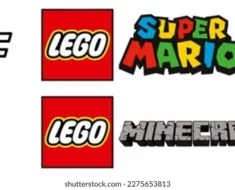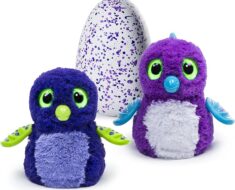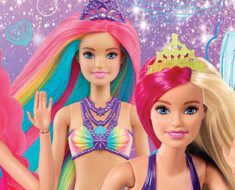Hasbro, Inc. is one of the world’s leading toy and entertainment companies, with a portfolio of iconic brands such as Nerf, Transformers, My Little Pony, Monopoly, Play-Doh, and Magic: The Gathering. But how did this multinational conglomerate start from humble beginnings as a textile remnant business in Rhode Island?
The Hassenfeld Brothers
The story of Hasbro begins in 1923, when three Polish-Jewish brothers, Henry, Hilal, and Herman Hassenfeld, founded Hassenfeld Brothers in Providence, Rhode Island. The brothers emigrated to the United States from Poland and engaged in the textile remnant business, selling cloth leftovers. By the mid-1920s, they expanded their product line to include pencil boxes and school supplies.
In 1926, the company incorporated under the name Hassenfeld Brothers Incorporated. Hilal Hassenfeld left for another textile venture, while Henry Hassenfeld took charge of the new corporation. He was a paternalistic but tough and shrewd businessman, who led the company through the Great Depression with a steady source of revenue from pencil manufacturing.
The Entry into Toy Manufacturing
During the late 1930s, Hassenfeld Brothers began to manufacture toys, an extension of their line of school supplies. They started with doctor and nurse kits, which were popular during World War II. In 1942, they introduced their first original toy, Mr. Potato Head, which was a plastic potato with attachable facial features. The toy was a hit and became the first toy to be advertised on television in 1952.
In 1954, Hassenfeld Brothers entered into a licensing agreement with Disney to produce toys based on its characters, such as Mickey Mouse and Davy Crockett. This boosted the company’s sales and reputation in the toy industry. In 1964, the company launched one of its most successful products, G.I. Joe, which was the first action figure for boys. G.I. Joe was inspired by the popularity of war-themed TV shows and movies at the time.
The Birth of Hasbro
In 1968, Henry Hassenfeld passed away and his son, Stephen D. Hassenfeld, became the president of the company. He changed the name of the company to Hasbro Industries in 1968, and later to Hasbro Bradley in 1984 after acquiring Milton Bradley Company, a maker of board games such as Scrabble and Parcheesi. In 1985, he shortened the name to Hasbro, Inc., which is still used today.
Under Stephen Hassenfeld’s leadership, Hasbro continued to innovate and acquire new brands and licenses. In 1983, Hasbro launched Transformers, a line of toys that could change from robots to vehicles or animals. Transformers was based on a Japanese toy line called Diaclone, which Hasbro licensed from Takara. Transformers became a global phenomenon with a successful animated TV series and comic books.
In 1984, Hasbro acquired Parker Brothers, another board game maker that owned the rights to Monopoly, one of the best-selling board games of all time. Hasbro also acquired Kenner Products in 1991, which produced toys based on Star Wars, Batman, and Jurassic Park.

The Expansion into Entertainment
In 1995, Stephen Hassenfeld died of AIDS and his brother, Alan G. Hassenfeld, became the chairman and CEO of Hasbro. He led the company into a new era of expansion into entertainment and digital media. In 1998, Hasbro acquired Tiger Electronics, a maker of electronic games and toys such as Furby and Giga Pets. In 1999, Hasbro acquired Wizards of the Coast, a publisher of trading card games and role-playing games such as Magic: The Gathering and Dungeons & Dragons.
In 2000, Hasbro formed a joint venture with DreamWorks SKG to create DreamWorks Interactive (later renamed EA Los Angeles), a video game developer that produced games based on Hasbro’s properties such as Medal of Honor and Clue. In 2001, Hasbro sold its interactive division to Infogrames for $100 million.
In 2007, Hasbro partnered with Paramount Pictures to produce live-action movies based on its brands such as Transformers and G.I. Joe. The Transformers film franchise has grossed over $4 billion worldwide as of 2020. In 2009, Hasbro launched its own film studio called Allspark Pictures (later renamed Entertainment One), which produced movies such as My Little Pony: The Movie and Bumblebee.
In 2019, Hasbro acquired Entertainment One, a Canadian media company that owned the rights to popular preschool brands such as Peppa Pig and PJ Masks, for $4 billion. This acquisition expanded Hasbro’s presence in the global family entertainment market and gave it access to eOne’s film and TV production capabilities.
The Future of Hasbro
Today, Hasbro is one of the largest and most diversified toy and entertainment companies in the world, with a market capitalization of over $7 billion as of 2023. It operates in four segments: consumer products, entertainment, gaming, and digital ventures. It owns over 1,500 brands and licenses, and sells its products in over 100 countries.
Hasbro’s vision is to create the world’s best play and entertainment experiences for all ages and audiences. It is committed to corporate social responsibility, philanthropy, and sustainability. It has been recognized as one of the World’s Most Ethical Companies by Ethisphere Institute, one of the World’s Most Admired Companies by Fortune Magazine, and one of the 100 Best Corporate Citizens by Corporate Responsibility Magazine.
Hasbro faces various challenges and opportunities in the dynamic and competitive toy and entertainment industry. It has to adapt to changing consumer preferences, technological innovations, environmental regulations, and social issues. It has to balance its core brands with new acquisitions and partnerships. It has to leverage its global reach and scale with local relevance and customization. It has to deliver consistent growth and profitability while investing in long-term value creation.
Hasbro’s mission is to make the world a better place for children and their families through play. With its rich history, diverse portfolio, and creative culture, Hasbro is well-positioned to achieve this mission and continue its legacy of success.







